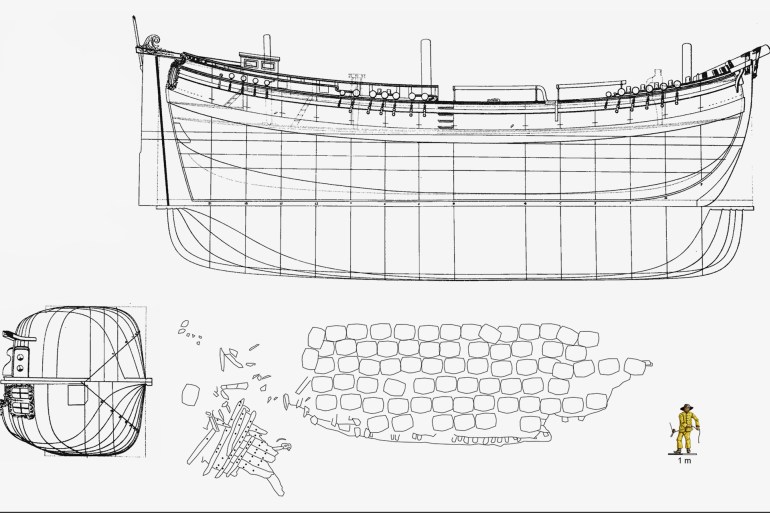Marine archaeologists in Germany have discovered the wreck of a 17th-century merchant ship at the bottom of the River Trav near the Baltic port city of Lübeck.
The shipwreck was first discovered in February 2020 during a routine sonar survey of shipping channels in the Trave river.
antique merchant ship
At that time, the sonar revealed an anomaly at a depth of 11 meters at the bottom of the river.
Divers reported this potential site to the cultural heritage authorities in Lübeck, and in November 2021 archaeologists at the Institute of Prehistoric Archeology at Kiel University were commissioned to examine the wreck.
In August, divers were finally able to explore the site.
Over the past eight months, archaeologists have made several dive attempts that lasted up to 464 minutes, during which they were able to photograph and map the entire site.
Scientists did not find any cannons on board the sunken ship, which rules out the possibility that it was a warship.
Therefore, scientists concluded that the wreck belonged to a sailing ship that was carrying at least 150 large wooden containers.
Seventy of these containers were found in their original position on the deck of the ship, while the other 80 were in a position adjacent to it, indicating that the ship sank vertically and has remained in an upright position since its sinking.
The first wreckage in the Western Baltic region
The wooden planks date back to 1650, the same period when Lübeck was a center of maritime trade in Northern Europe.
This type of medium-sized sailing vessel was the backbone of the trade movement in the Baltic Sea.
A wreck similar to these sailing ships has only been found in the eastern Baltic Sea.
This wreck is the first of its kind to be found in the western Baltic.
The history of wooden panels dates back to 1650, when Lübeck was a center of maritime trade (Fritz Jürgens - University of Kiel)
According to the press release published by the University of Kiel, archaeologist Fritz Juergens on the expedition says that the ship may have been built in the mid-17th century, according to dating experiments with the ship's timber.
Despite the erosion of the wooden shipping boxes that were found, the scientists were able to identify what was inside, which is the lime, as the lime hardens into a solid substance upon contact with water.
And so the shipment has survived to this day, despite the decay of its wooden containers.
ship in danger
Lime was a major building material in medieval Europe and early modern times.
It is possible that this ship's sailing site started from a Scandinavian point towards Lübeck, but it did not reach its intended destination.
The wreck is now under threat from the environment due to erosion (Christian Hoveh - Kiel University)
The ship was found in the middle of the canal, at a bend in the river, which was difficult to navigate.
It is not known why the ship sank, but archaeologists believe it may have ran aground and caused a leak.
The ship sank standing upright on the river bed, probably thanks to the heavy lime load it was carrying.
Today, shipwrecks are exposed to environmental threats from erosion.
The exposed parts of it are also infested with wood worms, so experts at the University of Kiel, in cooperation with officials in the city of Lübeck and other institutions, are looking for ways to salvage the wreck and timber of the ship, as well as the cargo.

